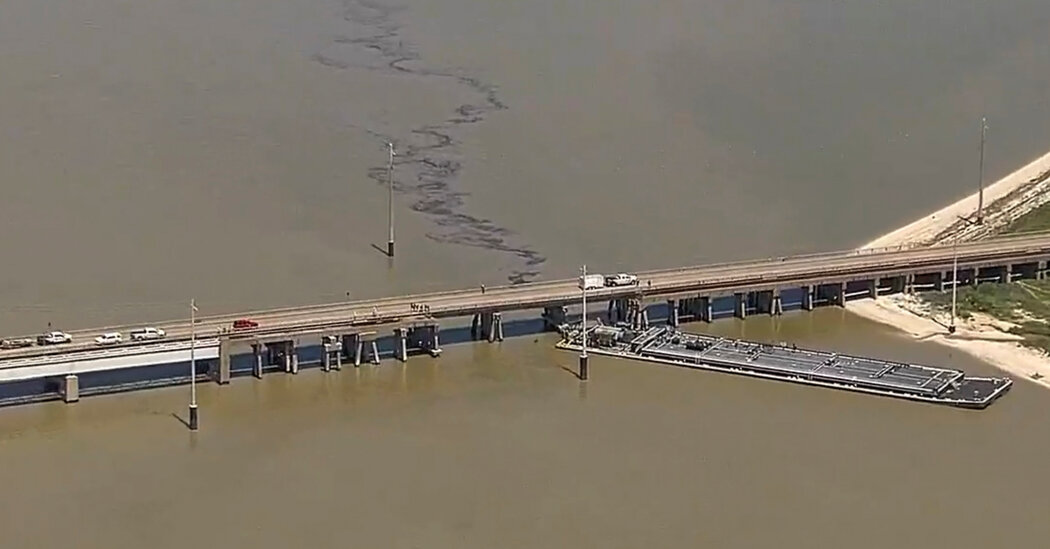A barge struck a causeway connecting Galveston, Texas, to a small island on Wednesday morning, sending debris and oil into the bay, officials said.
The Pelican Island Bridge was hit around 10 a.m., the city of Galveston said in a statement, and the causeway was closed to car traffic until further notice, shutting off the only road to the island. There were no reported injuries. The bridge connects the north side of Galveston Island with the south side of Pelican Island, which is home to a Texas A&M University campus and two museums.
The barge is owned by Martin Petroleum, Galveston County Office of Emergency Management said on social media. It has a capacity of 30,000 gallons, but it was not clear how much oil spilled into Galveston Bay, the office said. Martin Petroleum did not immediately respond to a request for comment.
Vessel traffic in the channel was temporarily halted, county officials said, and the structural damage to the bridge was being assessed by the Texas Transportation Department. The cause of the accident was not immediately known. Power was temporarily interrupted on Pelican Island but had been restored by Wednesday afternoon.
Emergency management officials from the city, state and university responded to the crash, the city said, adding that the U.S. Coast Guard was assessing the extent of the spill and would “initiate the containment and cleanup processes.”
Texas A&M University at Galveston said on social media that power had been restored to the campus, which is home to the school’s marine and maritime program.
Aerial footage from KHOU-TV, a CBS affiliate, showed a collapsed portion of what appeared to be an abandoned railroad bridge that ran alongside the causeway. A large chunk of concrete and metal lay across the bow of the barge as a long vein of oil leaked from it into Galveston Bay. Emergency responders gathered on the road surface, and live footage showed pickup trucks arriving on the bridge.
The accident in Texas comes nearly two months after a 985-foot-long cargo vessel crashed into the Francis Scott Key Bridge in Baltimore on March 26, causing a collapse that killed six construction workers and deepened anxieties about the state of the country’s infrastructure.
The Pelican Island bridge is just west of the Port of Galveston, a deepwater shipping channel that is among the busiest cruise ports in North America. More than 900 cruise and cargo ships and other vessels pass through the port every year, according to its website.
The bridge to Pelican Island was built in 1959 and carries an average of about 9,100 cars a day, most of which are heading to and from the campus, according to The Houston Chronicle. Most of the island is undeveloped, with only a single major road running across it.
In March, The Galveston County Daily News reported that the Port of Houston Authority had approved an agreement with Galveston County to provide land for a new $100 million vehicular bridge and $300 million for a rail bridge to the island.




